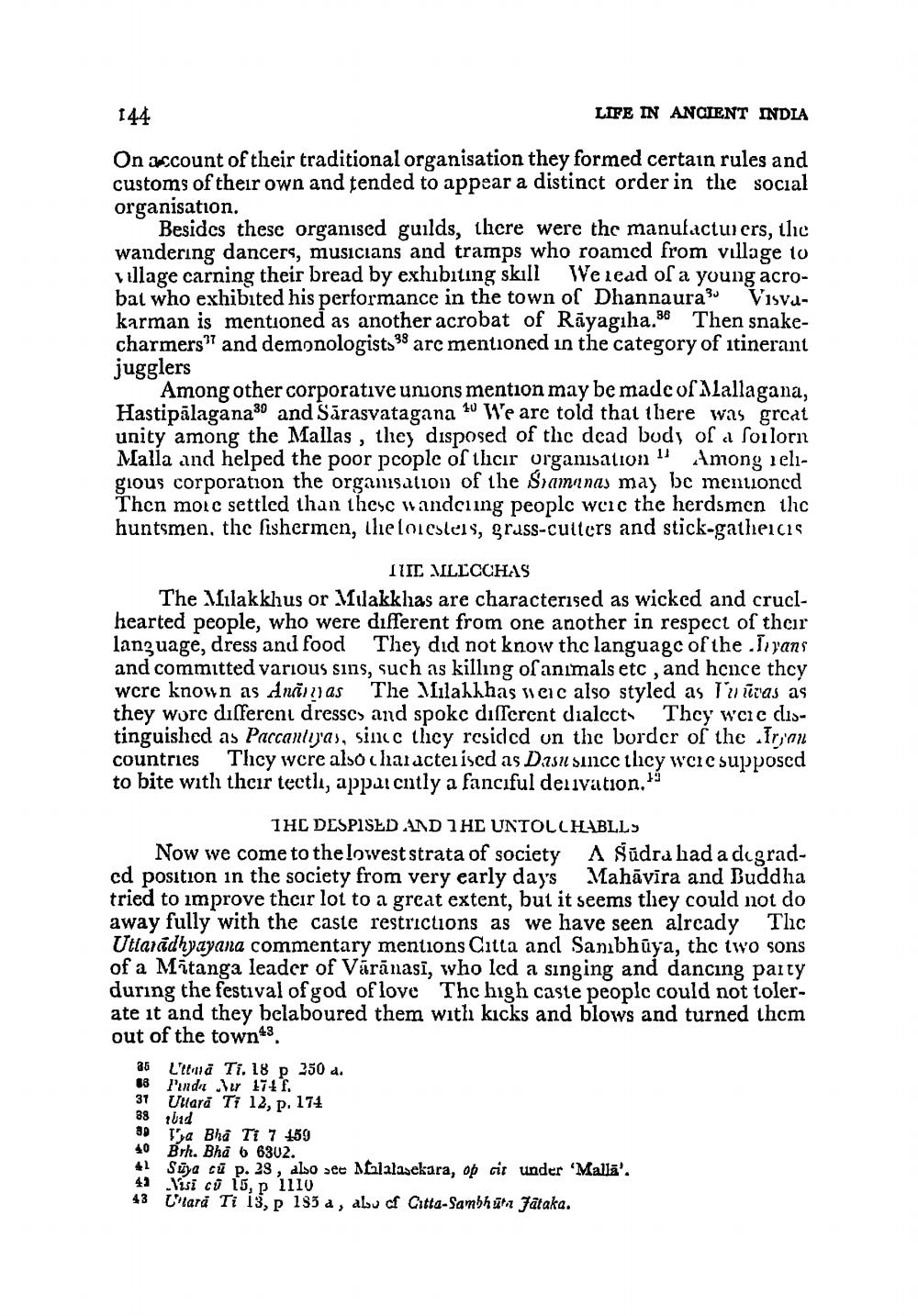________________
144
LIFE IN ANCIENT INDIA
On account of their traditional organisation they formed certain rules and customs of their own and tended to appear a distinct order in the social organisation.
Besides these organised guilds, there were the manufacturers, the wandering dancers, musicians and tramps who roanied from village to village carning their bread by exhibiting skill Weiead of a young acrobat who exhibited his performance in the town of Dhannaura3 Visvakarman is mentioned as another acrobat of Rāyagıha.36 Then snakecharmers and demonologists 38 are mentioned in the category of itinerant jugglers
Among other corporative unions mention may be made of Nallagana, Hastipālagana39 and Sārasvatagana 10 We are told that there was grcat unity among the Mallas, they disposed of tlic dead body of a forlorn Malla and helped the poor people of their organisation 1 Among eligious corporation the organisation of the Bramanas may be mentioned Then moic settled than thesc Handcing people weic the herdsmcn thc huntsmen, the fishermen, the foresleis, grass-cutters and stick-gatheicis
TIC MLLCCHAS The Wilakkhus or Milakkhas are characterised as wicked and cruclhearted people, who were different from one another in respect of their language, dress and food They did not know thc language of the li yans and committed various sins, such as killing of animals etc , and hence thcy were known as Aninas The Wilahlhas veic also styled as 'n tas as they worc different dresses and spokc different dialects They were distinguished as Paccantijas, since they resided on the border of the Iron countries They were also characterised as Dasu since thicy wcie supposed to bite with their tectlı, apparently a fanciful derivation."
THC DESPISED AND THE UNTOLCHABLLY Now we come to the lowest strata of society Sūdra had a degradcd position in the society from very early days Mahāvīra and Buddha tried to improve their lot to a great extent, but it seems they could not do away fully with the caste restrictions as we have seen alrcady Thc Uttaradhyayana commentary mentions Citta and Sanıbhūya, thc two sons of a Matanga leader of Vārānasi, who lcd a singing and dancing party during the festival of god of love Thc high caste people could not tolerate it and they belaboured them with kicks and blows and turned them out of the town 3.
25 Lt Ti. 18 p 250 a. 88 Panda w 174 f. 37 Ullară Ti 12, p. 174
tuid 80 ta Bhå Ti 7 +59 40 Brh. Bhå 6 6302.
Sia cũ p. 23 , also see Malalasekara, op cit under 'Malla'. 43 Visi cü 15, p 1110 43 Ulará Ti 13, p 135 a, alu of Citta-Sambhün fataka.
38




